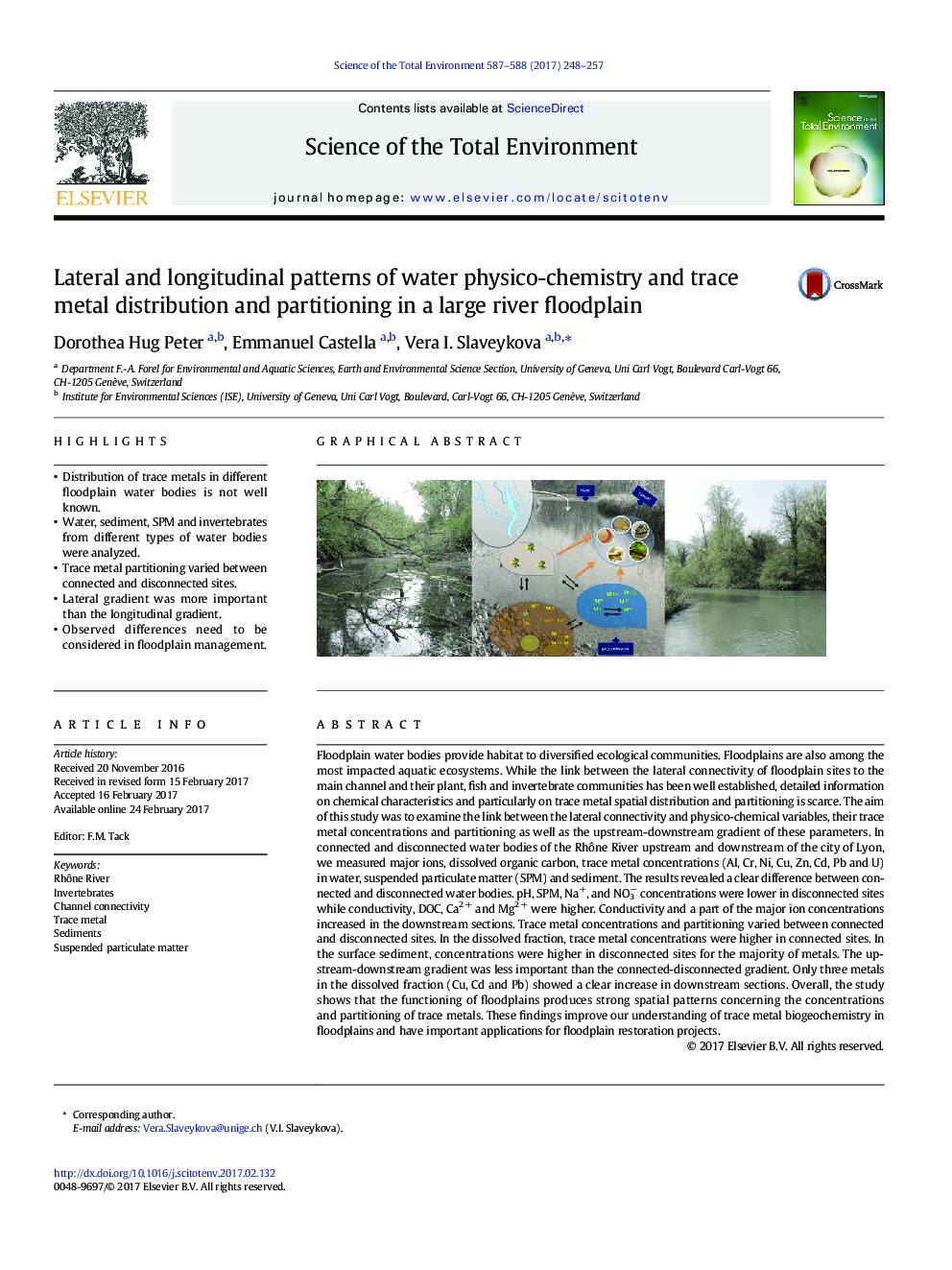| کد مقاله | کد نشریه | سال انتشار | مقاله انگلیسی | نسخه تمام متن |
|---|---|---|---|---|
| 5751581 | 1619706 | 2017 | 10 صفحه PDF | دانلود رایگان |
- Distribution of trace metals in different floodplain water bodies is not well known.
- Water, sediment, SPM and invertebrates from different types of water bodies were analyzed.
- Trace metal partitioning varied between connected and disconnected sites.
- Lateral gradient was more important than the longitudinal gradient.
- Observed differences need to be considered in floodplain management.
Floodplain water bodies provide habitat to diversified ecological communities. Floodplains are also among the most impacted aquatic ecosystems. While the link between the lateral connectivity of floodplain sites to the main channel and their plant, fish and invertebrate communities has been well established, detailed information on chemical characteristics and particularly on trace metal spatial distribution and partitioning is scarce. The aim of this study was to examine the link between the lateral connectivity and physico-chemical variables, their trace metal concentrations and partitioning as well as the upstream-downstream gradient of these parameters. In connected and disconnected water bodies of the Rhône River upstream and downstream of the city of Lyon, we measured major ions, dissolved organic carbon, trace metal concentrations (Al, Cr, Ni, Cu, Zn, Cd, Pb and U) in water, suspended particulate matter (SPM) and sediment. The results revealed a clear difference between connected and disconnected water bodies. pH, SPM, Na+, and NO3â concentrations were lower in disconnected sites while conductivity, DOC, Ca2 + and Mg2 + were higher. Conductivity and a part of the major ion concentrations increased in the downstream sections. Trace metal concentrations and partitioning varied between connected and disconnected sites. In the dissolved fraction, trace metal concentrations were higher in connected sites. In the surface sediment, concentrations were higher in disconnected sites for the majority of metals. The upstream-downstream gradient was less important than the connected-disconnected gradient. Only three metals in the dissolved fraction (Cu, Cd and Pb) showed a clear increase in downstream sections. Overall, the study shows that the functioning of floodplains produces strong spatial patterns concerning the concentrations and partitioning of trace metals. These findings improve our understanding of trace metal biogeochemistry in floodplains and have important applications for floodplain restoration projects.
189
Journal: Science of The Total Environment - Volumes 587â588, 1 June 2017, Pages 248-257
